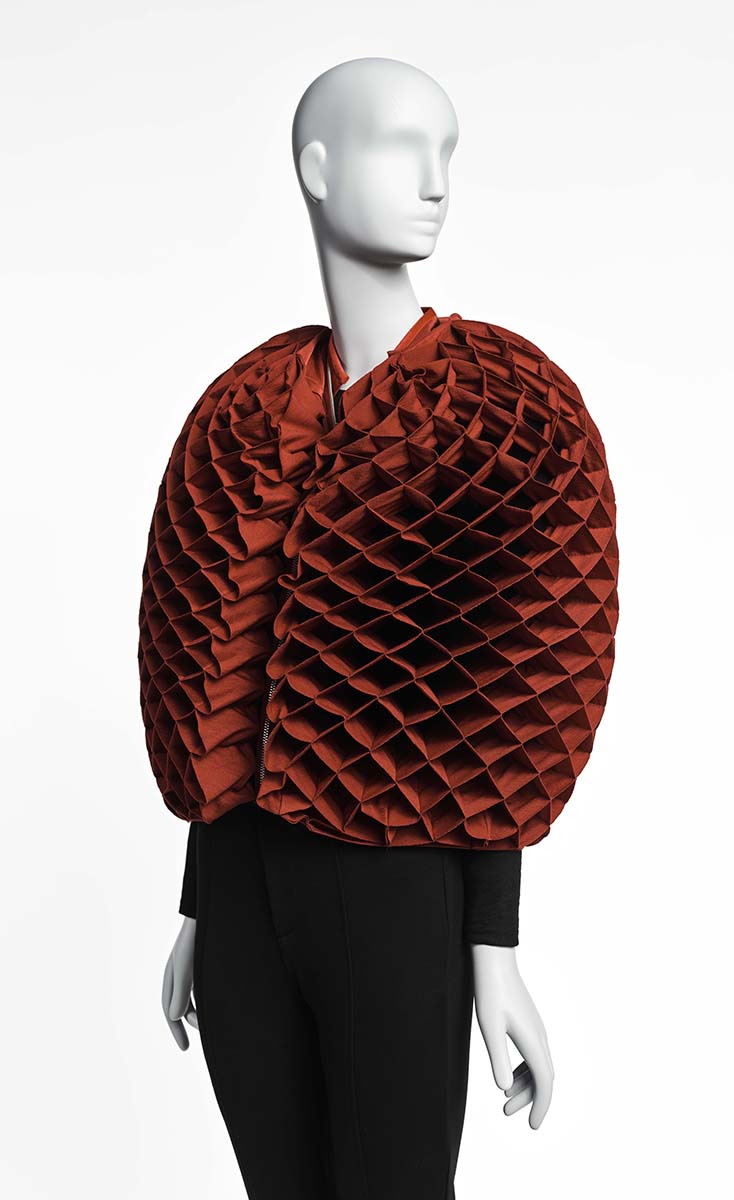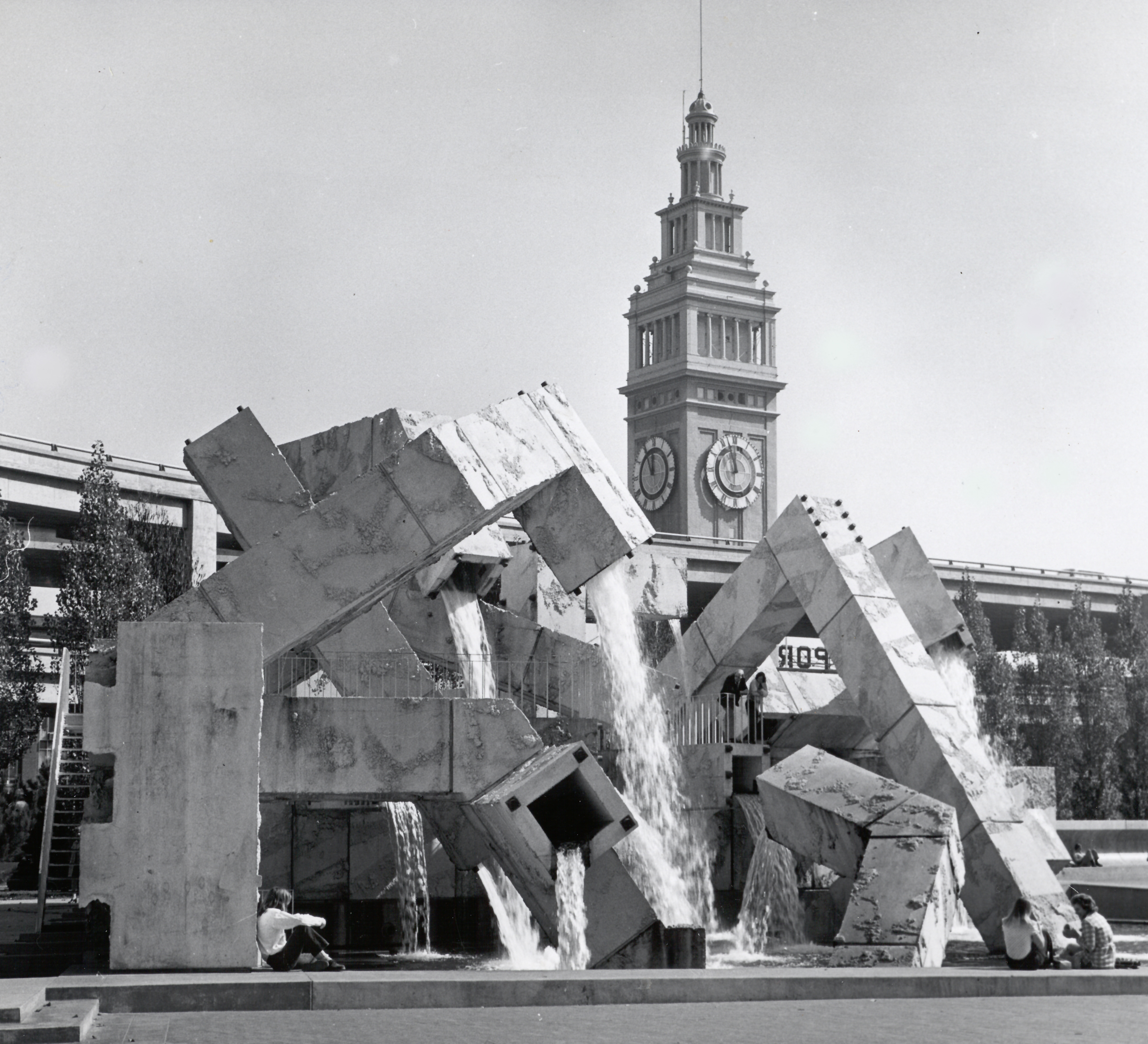
Art of Style: 100 Years of Fashion in San Francisco
By Emily Wilson
"Fashioning San Francisco: A Century of Style" runs January 20 through August 11 at the de Young Museum
Many fashion exhibitions focus on the (usually male) designers and their genius, says Laura Camerlengo, Curator in Charge of Costume and Textile Arts at the Fine Arts Museums of San Francisco. But with "Fashioning San Francisco: A Century of Style" at the de Young Museum, the curators decided to spotlight the women who wore the clothes and donated them to the museum’s collection. Camerlengo added that Elizabeth DeSole, a New York patternmaker, has constructed paper wigs to go with each ensemble, making it easier to envision the women wearing those fashions.

Pair of woman’s pieced leather boots, 1972. Image courtesy Fine Arts Museums of San Francisco. Photography by Randy Dodson
“It’s to assert the agency of the wearer as the person who has a sense of style,” Camerlengo said. “Another thing that's important that you'll see throughout the catalog and included in the labels in the show is that we talk about where the garment was worn and by whom it was worn, just to give people a sense of how fashion was integrated into the daily lives of the donors in our collection.”
The exhibition spans a century, starting at the beginning of the 20th century when San Francisco was recovering from the 1906 earthquake and fire and redefining itself. It highlights women emerging as cultural, civic, and philanthropic leaders, and showcases the city’s inclusivity and international style from bohemian fashion to French couture gowns to power suits. There will be 100 collection highlights from more than 50 designers, including Alexander McQueen, Issey Miyake, Pierre Balmain, and Vivienne Tam, most on display for the first time.

Junya Watanabe, Comme de Garcon, Jacket, 2015. Image courtesy Fine Arts Museums of San Francisco. Photography by Randy Dodson
Influences like its place on a port, with people coming here from all over the world, the moderate climate, and the variety of places San Franciscans have to show off their fashions, mean residents here have a unique style, says Camerlengo, “What I find fascinating about San Francisco is how in a single day, people can exist in multiple spaces. That might be akin to New York, but I think it's something that's different than other parts of the United States,” she said. “San Franciscans are very sociable, and that extends to not just navigating between domestic spaces and workspaces, but also our lively backdrop of restaurants, of events, of trade, of being a growing and thriving metropolis.”
Camerlengo says you see the impact of San Francisco’s diverse population and international visitors in the costume and textile department’s collection, which has more than 14,000 artworks from about 125 countries.
The city plays an important role in Chinese American identity, says Sarah Cheang, head of the History of Design at London’s Royal College of Art, who wrote an essay for the show’s catalogue, “Chinese Design: An Asian Presence on the Fashion Stage.”
Cheang focused on Chinatown’s place in San Francisco’s history, noting how architect Philip P. Choy writes about residents rebuilding the neighborhood after the earthquake with pagodas, dragons, and balconies to create “an enjoyable location of “Oriental” fantasy rather than the manifestation of a threat.”
Cheang mentions designers such as Frederick Gibson Bayh, Vivienne Tam, and Kaisik Wong (who created clothes for Tina Turner, Salvador Dali, and Elton John, among others).
“I wanted to take the article towards the stories of people who are in North America but have Chinese heritage, or to think about European designers in relation to encounters with China and Chinese people,” she said. “I’m trying not to tell another story of Chinese fantasy from the perspective of non-Chinese people.”

Kaisik Wong, Evening ensemble, 1985. Image courtesy Fine Arts Museums of San Francisco. Photography by Randy Dodson
Along with Wong’s evening ensemble of silk georgette and gold lamé, Tam’s Mao nylon mesh dress with repeated images of Chairman Mao, and Bayh’s bright blue silk blouse and skirt with embroidered dragons from Gump’s, the exhibition has evening gowns from designers like Christian Dior with glass seed beads, sequins, and rhinestones.
The museums have a strong collection of French couture from the 1940 to the 1960s, Camerlengo says. But working on the show, she learned something that surprised her — that San Francisco designers and retailers got exclusive access to fashions from France, meaning when collections came out, they would have first right to see the shows, copy them and license them.
“I thought it was amazing that everyone always assumes that New York is the capital of fashion,” she said. “But in fact, it was really San Francisco that was driving the production of high fashion, particularly right after World War Two.”
Camerlengo hopes the exhibition will inspire people to get off the couch and toss their sweatpants aside. She’d also like it to make the case for valuing the creativity of style.
“Historically fashion and textiles have been in the sphere of women, and I think there are these patriarchal perceptions of what holds value in society,” she said. “For me, it’s an expression of human creative skill and imagination, so it’s very much an art.”
→ "Fashioning San Francisco: A Century of Style" runs January 20 through August 11 at the de Young Museum

The Fine Arts Museums' digital team has created an augmented reality (AR) experience, in association with Snapchat Inc., that will give visitors the chance to see how ensembles presented in the exhibition look on them. This technology will immerse guests in designer creations of Yves Saint Laurent, Kaisik Wong, and Valentino as they virtually try on outfits in front of AR mirrors. A QR code enables images to be sent.
Main Image: Valentino Garavani, Evening Gown 1987. Image courtesy Fine Arts Museums of San Francisco. Photography by Randy Dodson



